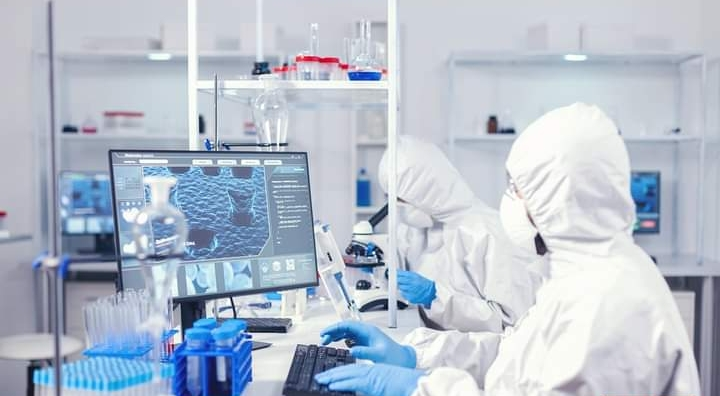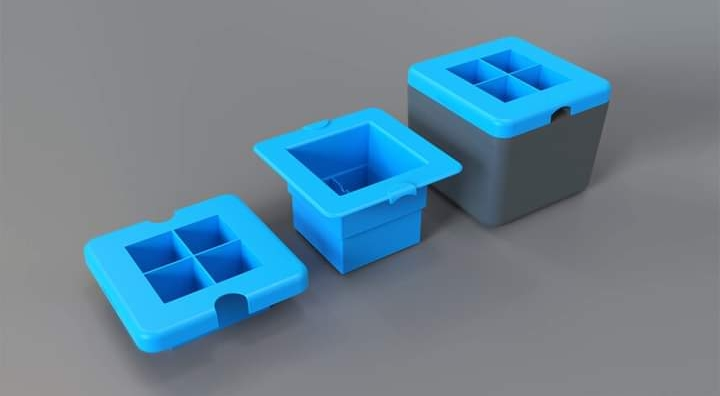Physicists at the University of Würzburg have successfully developed a new imaging technique for use on the human body. This technique can be done without the use of radioactive markers or radiation.
In the medical world, there are various imaging techniques for viewing the inside of the human body. Among these, computed tomography, MRI (magnetic resonance imaging), positron emission tomography (abdominal) and ultrasound have become indispensable to physicians.
The methods not only provide an opportunity to observe the internal parts of the human body, but with the help of these techniques, doctors can also get a clear understanding of the various functions and disorders of the human body.
A group of physicists and doctors at the Ulos-Maximilians-Universität Würzburg successfully developed a new imaging technology free of radioactive radiation for use in the human body, in the middle of last year (2023). They named it Magnetic Particle Imaging (MPI). With the help of the portable scanner they have developed, it is possible to see moving objects inside the human body, such as blood flow.
Professor Volker Ber and Dr. Physics Institute of this university. Patrick Vogel was the principal investigator of the study. They published their findings in the journal Nature Scientific Reports.
As the name suggests, magnetic particle imaging is a technique for the direct visualization of tiny magnetic particles (nanoparticles). Such nanoparticles are not produced naturally in the body. They are applied to the body as markers.
For example, in our familiar “positron emission tomography (abdominal scan) radioactive material is used as a marker. But MPI technology is more sensitive and faster than that. And its signal is not affected by the presence of muscle or bone.” Volker Behr explained the matter.
Pet scan technology works by detecting gamma rays emitted from radioactive markers. But it is not required in case of MPI. Because it works by using the signal of magnetic nanoparticles in the magnetic field.
“In this process, nanoparticles are converted into special types of magnets by an external magnetic field. Then not only their presence, but also their location in the human body can be identified,” said Patrick Vogel, lead author of the study.
But the idea of MPI is not new. In 2005, the Philips company released the images created with this new technology in a small exhibition. However, only a few centimeters in length are taken as samples. It turns out that creating a device suitable for taking pictures of the human body is much more difficult than that. As a result, larger, heavier and more expensive technology is required.
In 2018, a team led by Professors Volker Behr and Patrick Vogel discovered a new way of using complex magnetic fields to make images of tiny objects. The research, which lasted several years, was funded by the German Research Foundation (DFG). Scientists have successfully applied this new technology to MPI scanners. It is called IMPI (interventional Magnetic Particle Imaging – iMP) which will only be used for medical purposes.
“Our IMPI scanner is so small and light that you can take it anywhere,” said Vogel. The two researchers successfully presented a side-by-side comparison of their scanner with specialized X-ray machines. They use X-ray machines similar to those used in angiography in their hospitals.
The team, led by Prof. Thorsten Bley and Dr. Stefan Herz from the Würzburg University Hospital’s Department of Interventional Radiology, was involved in the project from the beginning. They performed measurements on a realistic vascular phantom and evaluated the first images.
“This is the first important step towards developing a radiation-free medical system. MPI has the potential to completely transform the sector.” said the senior author of the study. Steffer Herz.
In addition to making measurements with the IMPI instrument, the two physicists are working to further improve the scanner. Now their objective is how to improve image quality.
This breakthrough technology could revolutionize future disease detection and improve patient care.
Advantages Of Using IMPI Tools
• Unraveling the mysteries of the human body
A clear picture of the details of the internal structure of the human body can be seen thanks to this state-of-the-art technology, that too directly. From organs to muscles or blood vessels or nerves, using this innovative technology, doctors can see a complete picture of the inside of the patient’s body before their eyes.
• Major advances in disease detection
MPI is going to revolutionize the entire system of disease detection very soon with its ability to capture images in the fastest possible time. Physicians and radiologists can now detect any anomaly, diagnose a disease or accurately analyze an injury, that too in a very short period of time.
• Non-harmful and patient-friendly
One of the most remarkable aspects of this technology is that it is completely safe for patients. This image technology can be used without any defense mechanism. Ensures a patient-friendly and comfortable environment as there is no harmful radiation.
• Taking immediate action
With MPI imaging technology, it is possible to see inside the human body in real time. As a result, this technology can be used in a variety of ways during treatment. As doctors can see directly inside the body during surgery or any surgical procedure, more precise surgery is possible and patients’ chances of recovery are increased.
• Advanced training
Medical colleges and training centers can benefit from this technology. Using technology, future medical professionals will gain a deeper understanding of the anatomy and pathology of the human body. As a result, they will be better prepared to solve complex patient problems in the future workplace.
A Great Achievement Of Future Medicine
This revolutionary imaging technology will be an important milestone in the evolution of medicine. This innovation is an example of technological advancement in the healthcare sector. MPI technology proves that there is still room for innovation in the healthcare sector.
It is a very fast imaging technique. MPI can generate images of the human body in just a few seconds. The result is ideal for dynamic imaging or photographing moving objects. An example is the flow of blood in the body.
JMU researchers are now working to use MPI at the clinical level. They believe MPI can be used to diagnose a variety of diseases, including cancer, heart disease and stroke.
As medical science advances, we will see more innovations like these to improve patient care and healthcare. With MPI technology, the inside of the human body can be quickly seen and an unparalleled opportunity to learn about human anatomy is created. As a result, this new technology will undoubtedly open up new possibilities for disease detection and treatment.
When the technology becomes mainstream, it will have a positive impact on the lives of countless people. This technology is going to be a milestone for future medicine and technology.



